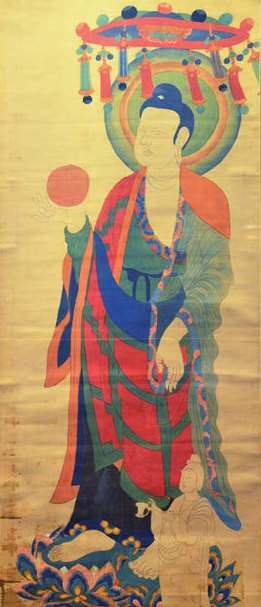Another route is the Steppe Silk Road, which includes two sub-courses. The northern sub-course started from the Siberian Plateau, headed westward from the Mongolian Plateau and passed the Aral Sea, Caspian Sea and Black Sea to reach East Europe. The southern sub-course started from China’s northeast coast and followed the northern foot of the Tianshan Mountains to reach Central and West Asia and East Europe. Until the Ming and Qing dynasties (1368-1911), this route was also known as the Tea Road. Even during the 1930s and 1940s, merchants still frequently traveled to Ulan Bator, Khovd and Moscow via this route.
The Maritime Silk Road also played an important historical role. The Han Dynasty saw establishment of a shipping lane between Guangdong and India. A few centuries later, this sea route connected the coastal cities of Quanzhou and Hangzhou and went through the Strait of Malacca to the Indian Peninsula. The route further extended to the Indian Ocean, the Arabian Sea, the Arab Empire and the East African coast. The Maritime Silk Road was also known as the Maritime Chinaware Road and Maritime Aromatic Medicine Road, names reflecting the staple goods transported along it.
By the Tang Dynasty, Chang’an, starting point of the Silk Road, covered an area of 84 sq km – three times that of Rome. With a population of more than one million, Chang’an was then the world’s most populated city.
The Silk Road also left innumerable cultural heritages. Some, such as the Qin Dynasty (221-206 BC) terracotta warriors and horses and the Mogao Grottoes in Dunhuang, have survived till today. Others can never be restored. They include the Loulan Kingdom and Niya Ancient City in Xinjiang, and the Buddhas of Bamiyan in central Afghanistan, which the Taliban destroyed.
 |
|
A replica of a Bodhisattva from the Mogao grotto by artist Zhang Daqian. Provided to China Daily
|
Route for Various Commodities
In addition to silk, trade caravans also transported large amounts of chinaware via the Silk Road. During the Yuan Dynasty, China exported blue and white porcelain mainly to Islamic countries. China is now home to more than 100 pieces of the blue and white porcelain that it produced during the Yuan Dynasty. But another 200 or more are scattered around the world, one fifth – the largest amount outside of China – in Turkey’s Topkapi Palace Museum.
Chinese plants and herbs such as the mulberry tree, pear tree, birch, hollyhock, tea tree, ginger, coptis, and rhizoma smilacis glabrae were also introduced to Western countries via the Silk Road.
Ironware, lacquerware, bamboo articles and traditional Chinese medicines traveled along the ancient route as well.
In the meantime, this road was instrumental in the importing to China of commodities from the Western world. Carpets, woolen fabric, mercury, agate, and spices thus became accessible to the Chinese people. Glass products and woolen fabric promoted development of the Chinese porcelain and textile industries.
Vegetables thought to have originated in China, such as grapes, alfalfa, walnuts, flax, cucumbers, water melons, carrots, spinach, pomegranates, figs, and olives, were actually imported from the West along the Silk Road. Wine produced in the Western Regions has also been integrated into traditional Chinese viticulture over the past centuries.
The Silk Road was moreover a channel for bringing in exotic animal species like camels, lions, rhinoceros, peacocks and ostriches.
We Recommend:
